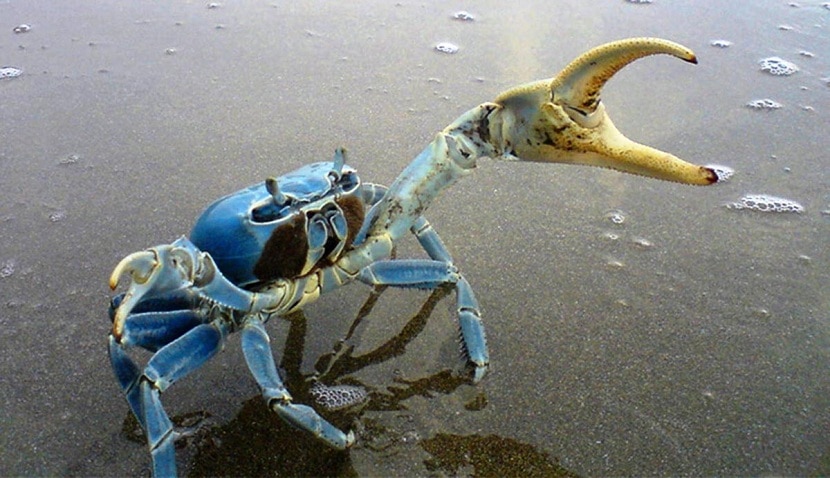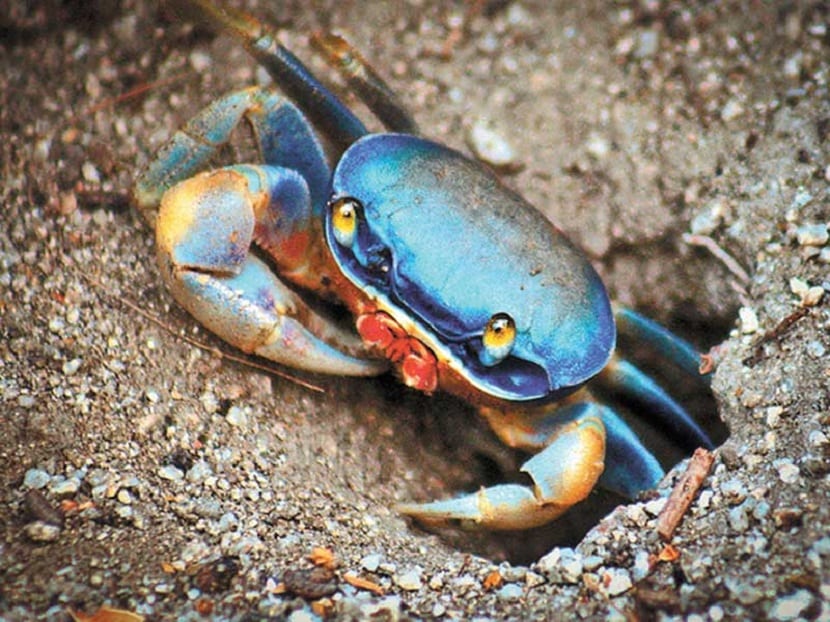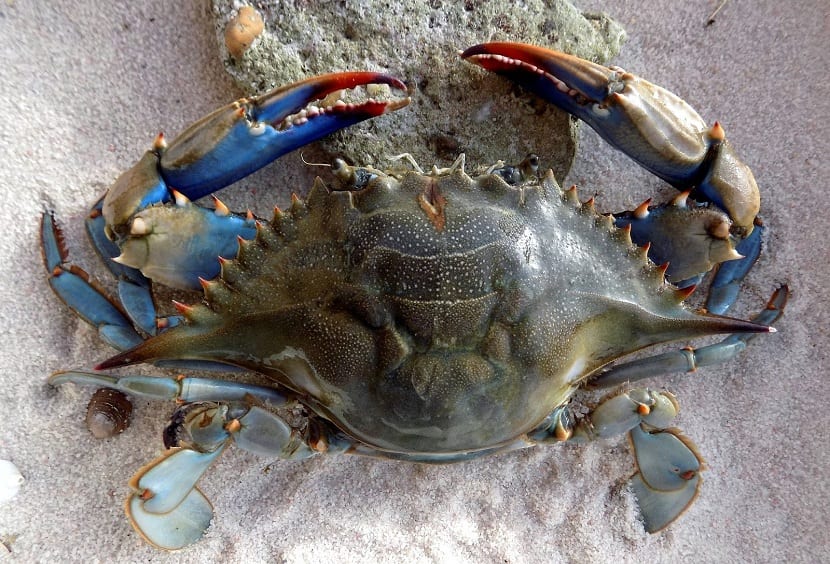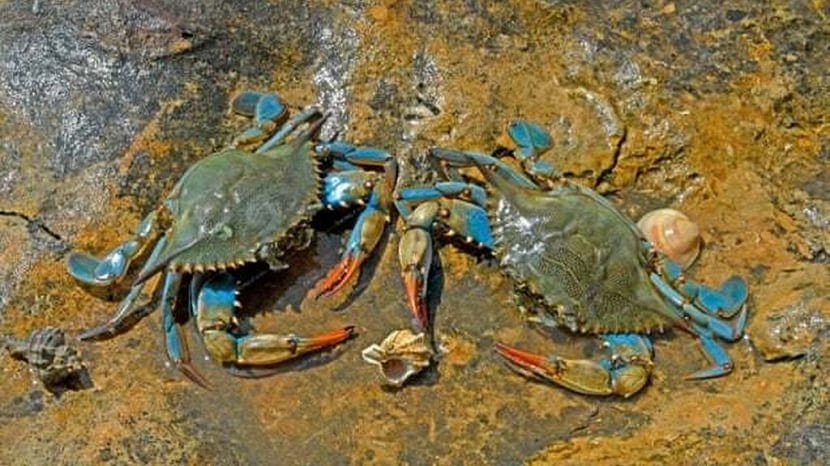
Crustaceans are colorful animals and well known throughout the world. There are many species that mainly rely on crustaceans in their diet. One of the crustaceans that attracts the most attention is the blue crab. Unlike other crabs, the color they have is not natural, so it stands out a lot from the rest. Although it is not yet classified as an endangered animal, many crabs die every day due to the pollution of seas and rivers due to human activities.
Do you want to know the secrets of the blue crab and its rarities? In this article we explain everything to you.
Key features

This species has an incalculable beauty that is given by this exotic blue color of its exoskeleton. There are also some varieties that can be iridescent blue, bone, orange, or even pink. These exotic colors make the blue crab recognized in many parts of the world.
One of the main differences that this crab has with the rest is the outer keel. This keel contains four other poorly defined keels on the surface of the carapace. The chelas are covered by finer hairs on the inside. The River crab usually has the head and internal organs covered by the shell. This serves as protection against any incident or danger both of the ecosystem where it lives and of the attack of any predator. The segments of the abdomen are covered by a flexible membrane that helps them move easily while remaining protected.
This crab has a fairly large pair of claws on the front. They are very necessary for them since it uses them to be able to eat, dig up to two meters deep and defend themselves from possible predators. Each pair of clamps precedes four pairs of legs that it uses to move and another four pairs that it uses to swim. These legs have been called pleopods. They are usually covered with fine hairs that serve to fix the eggs in it.
Description

It has a pair of eyes at the end of the appendages. Both taste and touch are perceived by a pair of large tentacles. If they are in good health and food conditions, they can be between 25 and 30 cm long and weigh a quarter of a kilo. Only 20% of all its weight is the tail.
Between the male and the female there are very clear differences. The first is where the genital pores are located. In the case of the female, it is specifically located at the base of the third pair of legs. Its shape is ovoid and transparent. On the other hand, in the male we find the organ at the base of the fifth pair of legs.
There are other differences that are clearer and easier to appreciate. For example, the male is larger than the female and has more robust claws. The female has longer pleopods than the male.
These animals, as they grow, make a change of the exoskeleton. It is usually done once or twice a year in adult specimens. When the blue crab leaves the old shell, it ingests a certain amount of water in order to fill the interior and to be able to increase in size. This is how it allows to have an adequate body volume to better develop muscle mass and other internal organs.
Once they have finished shedding the exoskeleton, they will have to harden the shell little by little using the calcium they have ingested through food.
Habitat and area of distribution

The blue crab is usually somewhat sensitive to changes in environmental conditions in the area where it lives. Despite this, its ability to adapt to different variables has allowed it to live in different habitats. They are usually found in lowlands where there are high concentrations of water such as dams, streams, swamps, wells, reservoirs. They prefer clean water with different temperatures since it has higher quality and there is more food.
Thanks to the fact that it can adapt to different environmental conditions, we can find it both in hot springs and in lakes with very cold waters. Its characteristics give it advantages of being able to survive drought. This is because they can be buried in the mud and enjoy the moisture. Once buried, they are able to remain in a state of lethargy that can last up to 1 year if necessary.
Feeding and reproduction of the blue crab

Since it is found in a multitude of habitats, it feeds on a wide variety of waste and leftovers. It can eat algae, other aquatic invertebrates, etc. They are omnivores, so they don't have too much trouble eating. They tend to be opportunistic and take advantage of neglect or changes in habitats to feed. Their varied diet consists of mussels, snails, fish, frogs, plants, carrion, other crabs, and even smaller blue crabs.
The fact that this animal can become a cannibal is not something frequent. It only happens if the food shortage is very high. It also occurs when they feel pressured by animals of the same species and are "imprisoned" in their habitats. In addition to the above, they can eat some insects through zooplankton and feed on diatoms.
As for its reproduction, it usually has a very short life cycle, so its growth rate is fast, as is its fertility. They have several spawning and reach sexual maturity at 4 years of age. The female spawns the eggs when they are not too developed, so they need maternal care for their development.
The reproduction It is conditioned by the length of the day and the temperature at which the water is. Mating can be in spring, when temperatures rise and days are longer.
I hope that with this information you can learn more about the blue crab and its characteristics.